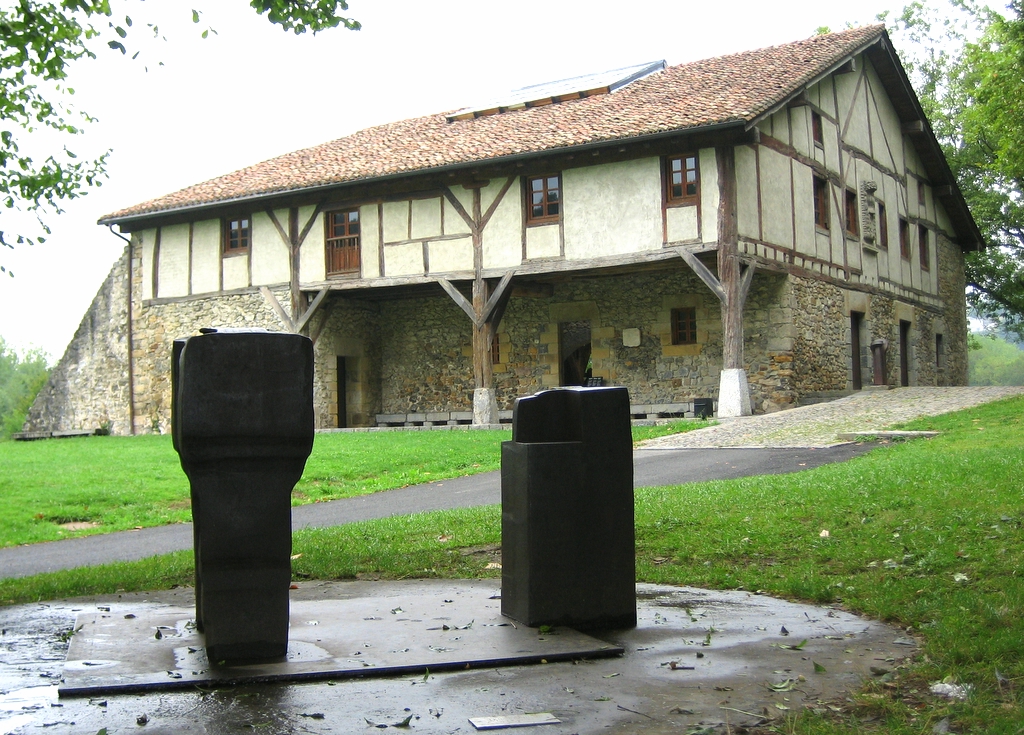Build Rome
-
Looks interesting!
Did you get your inspiration partly from the Esquiline wing of the Domus Aurea as well or is it just a coincidence?
(the central square you have put over the remains of the so-called "House of the Domitii" reminds me of the pentagonal court, as well as the peristyle on the higher level; the Esquiline wing's first floor also had this pavilion like structure, according to Laura Fabbrini).
I like the idea where Carandini puts a similar structure between the artificial lake and the vestibule, though I don't really agree with him placing the "coenatio rotunda" there...About the living quarters: there are many remains of neronian times below the Domus Flavia and Augustana. It is almost certain that Nero built a large reception hall where is now the Aula Regia, and the nymphaeum ("baths of Livia") could have been part of a triclinium, the same concept being reproduced on a larger scale by Domitian.
Since the official part of Domitian's Palace is certainly based upon an older neronian lay-out, I like to think that the residential part was as well... Certainly because one of the walls I mentioned earlier, which is 2% out of axis with the rest of the palace, seems to built on foundations older than the rest of the palace, 1st century AD.
I am still working on the late phase of the palace (severan/maxentian), once that is done I plan on doing the early flavian phase and have a shot at what the neronian phase could have been... But that's far future
-
Hey all,
I thought I would post some pics of what I'm doing...
I didn't render them yet, I prefer to wait until the model is more finished before I start putting textures etc.
These are just most of the raw volumes (not quite finished) and the start of some deatils to the hippodrome.
A simple lay-out for Augustus' home and the Temple/Precinct/Libraries of Apollo are there, the "Vigna Barberini" will follow after that.Don't hesitate to give comments, remarks, corrections, whatever! Always eager to learn...

Tom
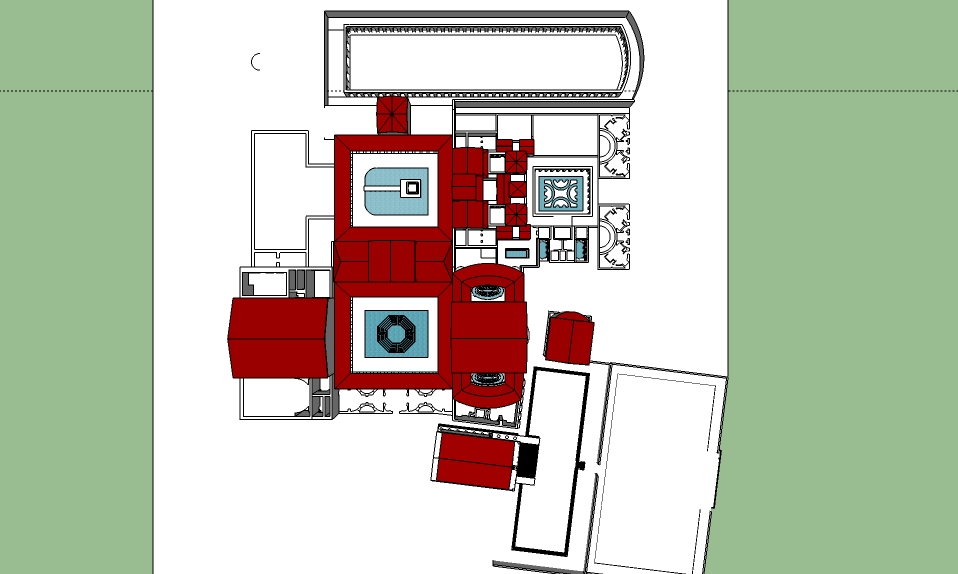
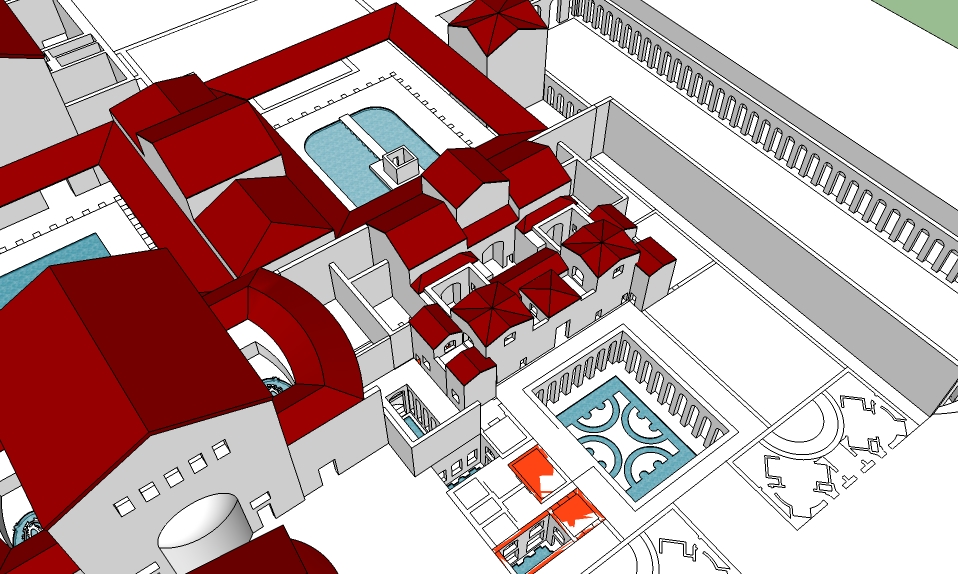
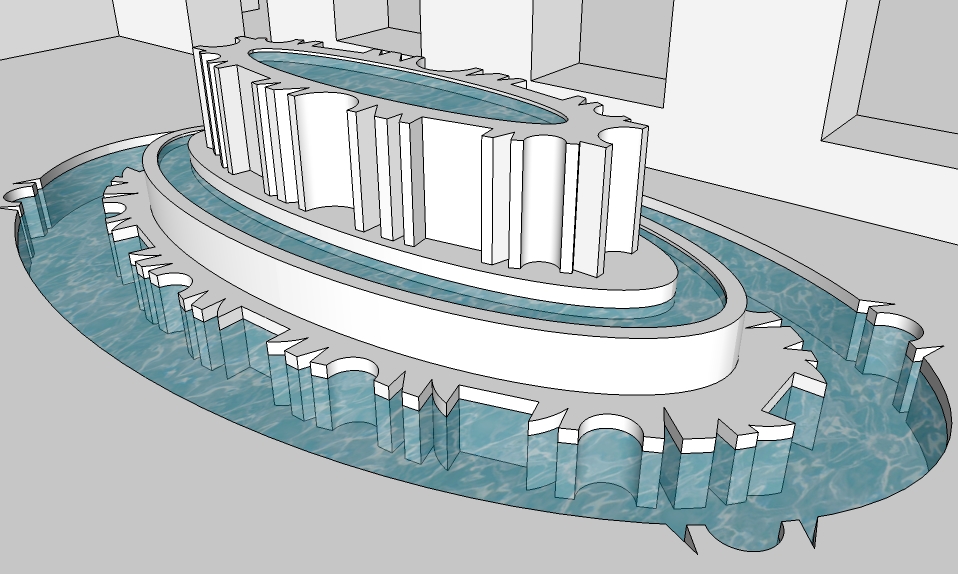
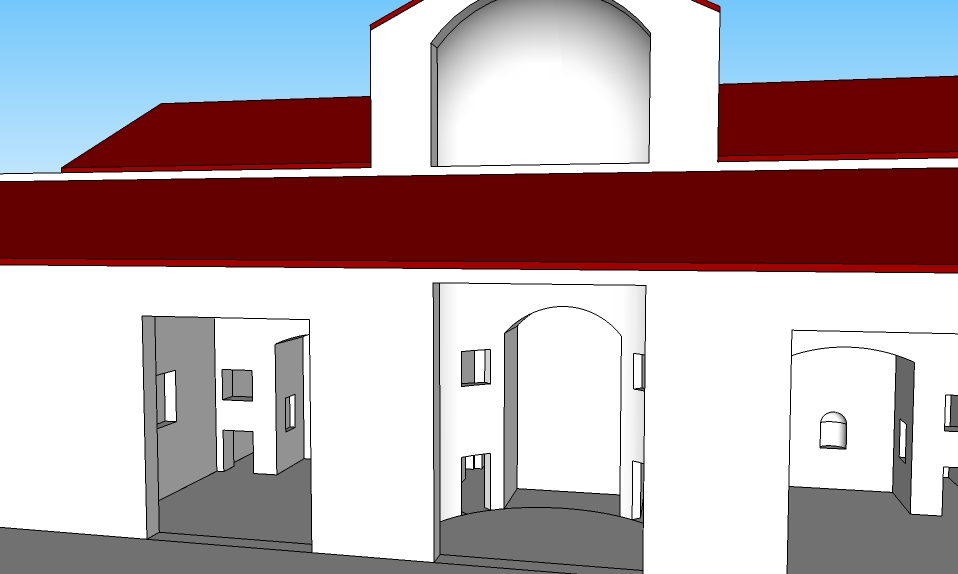
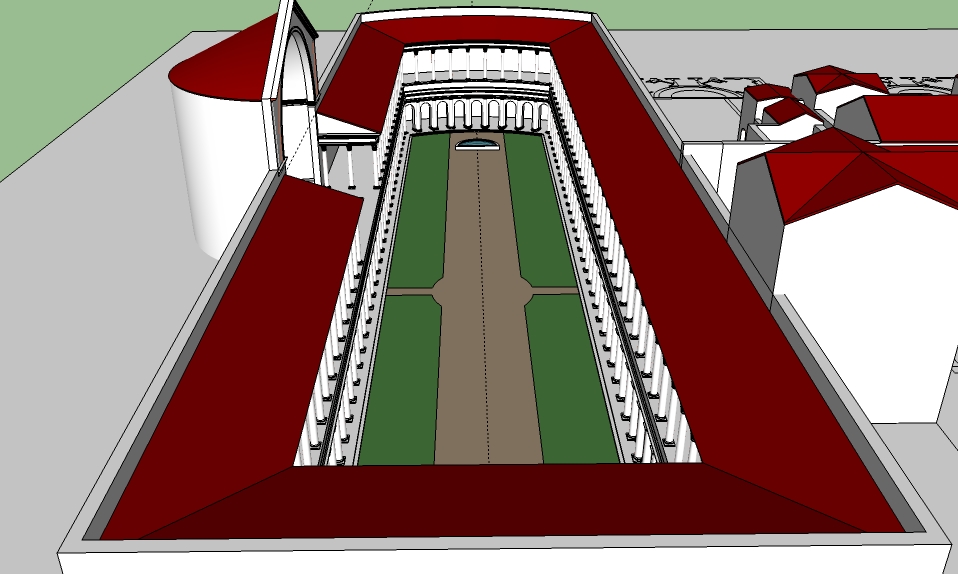
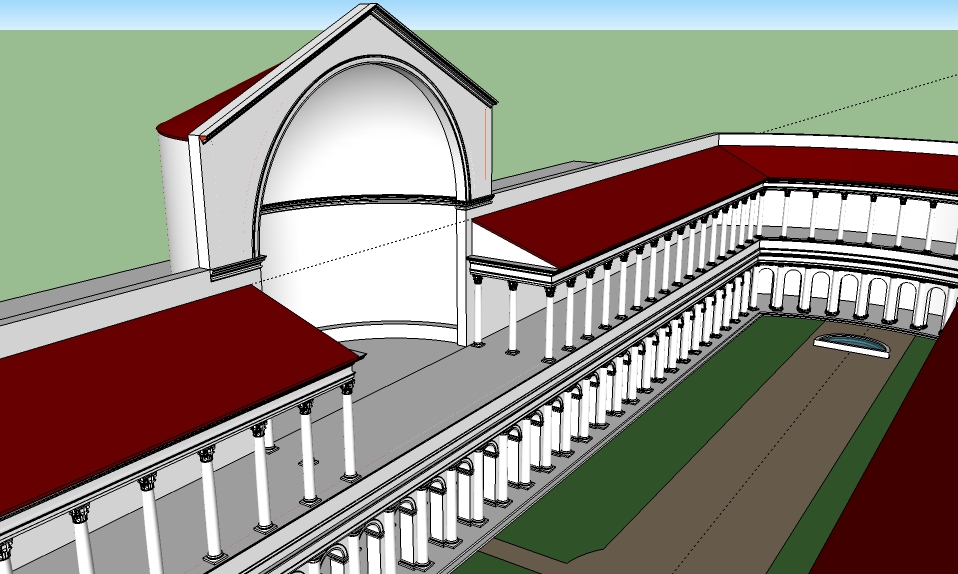
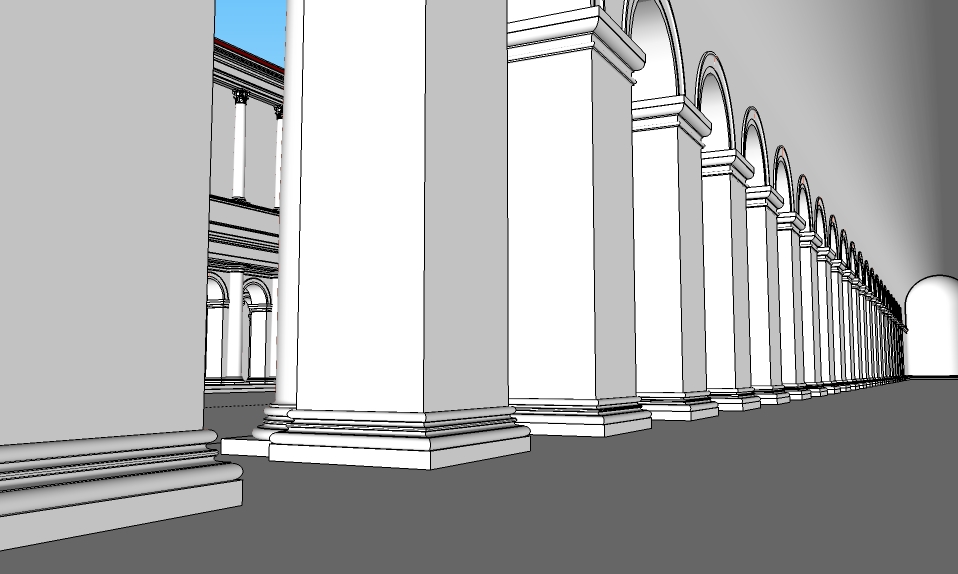
-
Ok, I am back. Fluffy's model is remarkable. I'd love to have it and stitch it with my work, it would spare me a lot of sweat.
I am facing the problem of filling in the gaps, residentrial areas that we don't know much about, and must be somehow be filled with believable buildings. In some cases it's just a matter of putting in generic volumes and cubes, maybe with a roof. But in some cases I'd want to put in some believable buildings, as in the case of the road that goes towards the arch of Constantine. We know it was a straight road, about 11 meters wide, with sidewalks of maybe 4 m., lined with housings with shops at the floor level. I am making some meccano like thing, building blocks that can be assembled. I am posting one of such, and a pic of one of thousands of possible assemblies.
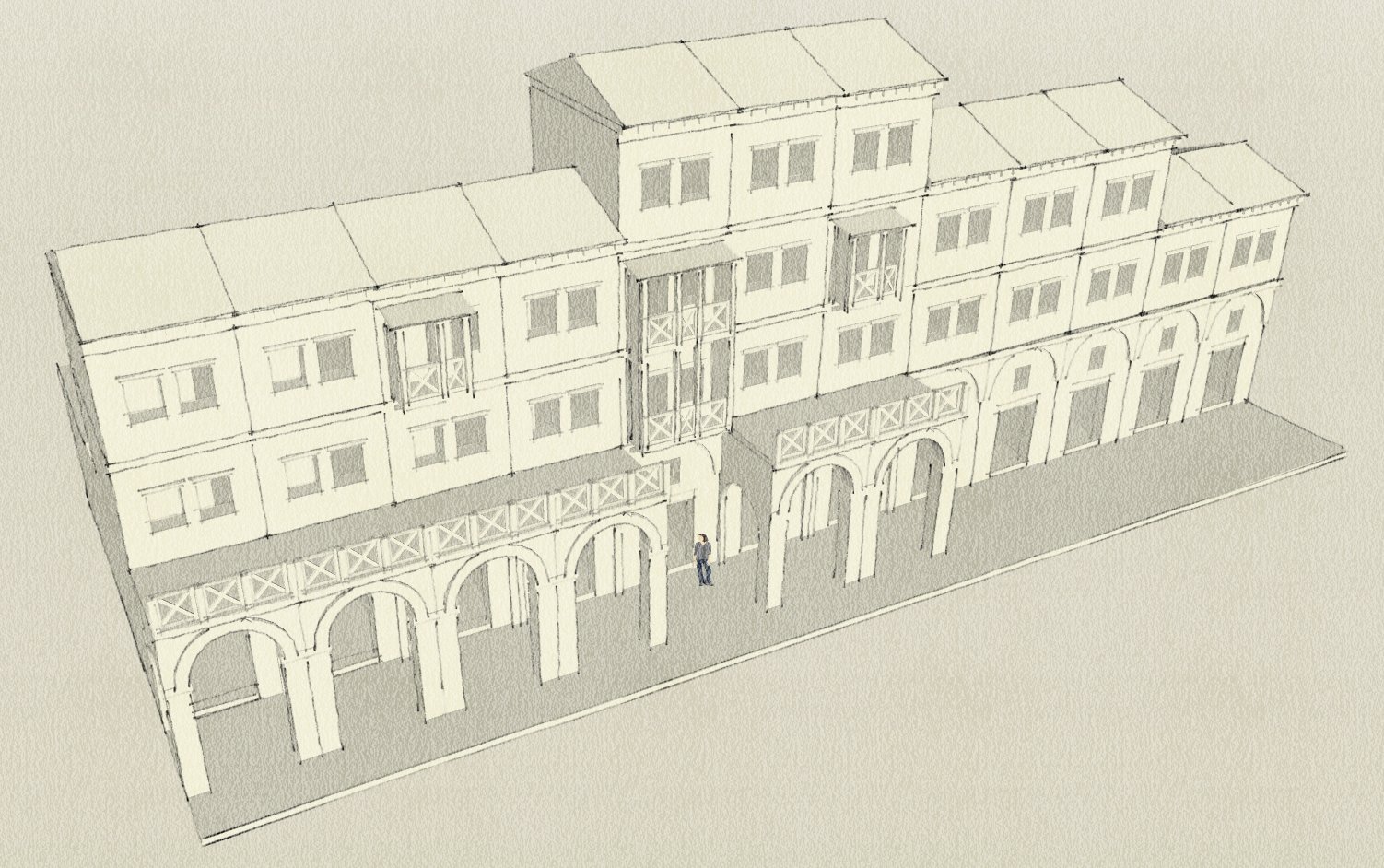
-
Some time ago I thought that the Meccano/Lego way is the best for residential buildings.
Rome Reborn does that using procedural software. And it's a pity that residential areas are not very well known, as far as I know Rome was the New York of that era, with "skyscrapers" (well, at least considering the time they were built).
Meanwhile I am working with the spanish theatres of the XVII century, I hope I can come back soon with my roman models.
And I am happy to see you again, hepf. I was wondering where were you.

-
Not Rome but all Versailles' Casttle and park, gardens were modilized with SU!
 All is "Online" !
All is "Online" ! 
http://www.versailles3d.com/en/
Have fun visit!
-
Buongiorno Marco,
Complimenti per l'imponente lavoro che stai svolgendo.
Ti allego un file che magari potrebbe servirti per qualche primo piano .
E' solo un umile contributo.
I miei più cordiali saluti.
Roberto
-
To Pichuneke. Yup, "skyscrapers" are a problem. Nero established a height limit of 21 m. (seven floors) which means that before the fire you had even higher buildings. Usually bricks for the first two floors, and shaky wooden structures going up from there. That didn't happen in the central area, but it did in the shadier neighbourhoods, like the Suburra. I am fond of Gilles Chaillet's work, he usually did a good research, but he got some things wrong. In the plate I show he imagined nice gardens and gazebos on the top floor. That's a modern idea, when you have elevators. In roman times the wealthy lived on the first floor, and poorer and poorer people going up. The really miserable lived on the top floor, had to carry water and things up there through shaky stairs, and were practically condemned to death in case of fire.

-
Seems the comic's image is very near from Alix by a French guy Jacques Martin (1948) a pioneer!

Gilles Chaillet was assigned by Jacques Martin the resumption of drawings of the adventures (1976) under his direction
Documentation is from Jacques Martin
-
@hepf said:
To Pichuneke. Yup, "skyscrapers" are a problem. Nero established a height limit of 21 m. (seven floors) which means that before the fire you had even higher buildings. Usually bricks for the first two floors, and shaky wooden structures going up from there. That didn't happen in the central area, but it did in the shadier neighbourhoods, like the Suburra. I am fond of Gilles Chaillet's work, he usually did a good research, but he got some things wrong. In the plate I show he imagined nice gardens and gazebos on the top floor. That's a modern idea, when you have elevators. In roman times the wealthy lived on the first floor, and poorer and poorer people going up. The really miserable lived on the top floor, had to carry water and things up there through shaky stairs, and were practically condemned to death in case of fire.
I knew it, hepf. Julius Cesar was born in one of those buildings. Am I right? At least I read it in a novel. Cerdá, the spanish urbanist that made the famous "ensanche" (enlargement) of the city of Barcelona, considered that, as there were not elevators in the XIX century, the buildings would help to the integration of the different social classes. In the first floor the richest, at the top floor the poorest. But as all the neighbors would see themselves every day, they may mix (the son of the rich marries the daughter of the poor in the same building).
-
Grazie per la colonna, Micione.
Yes, the comic image is Alix, but Chaillet is the artist and researcher on roman architecture.
This is a first try of the shops in front of the Coliseum. Probably the entrance to the side road to the right was monumentalized with an arch or something ...

-
Another set, that I'll probably use for the road that goes up to the arc of Constantine (Via Gregoriana) ...

-
That's what it looks like ...

-
My God, you make my model sink into oblivion...
I am - again - rethinking the whole thing. It was beginning to get so immense that I had to cut it into different files to make it manageable. And I barely began to add details...
If you want, I can mail you the pieces I already have. But as I said, they are still quite "crude". (it would be a wonderful opportunity for me as well to get your remarks on mistakes etc; there's many things I'm not sure about)Here's some views of the triclinium interior, on which I'm working now.
Regards,
Tom



-
C'mon, you are fishing for compliments! You are doing a wonderful job, very detailed. I work on simplified exteriors, much easier.
My objection is for the conic roofing in the gymnasium, I think a domelike roof would be more appropriate.
Suppose you already have these drawings, but if not it may help. Sheila Gibson was a fine lady and a great draftasman (draftswoman?).
Later on I'll get in contact to see if we can swap models, I have other things in my hands right now.

-
@hepf said:
C'mon, you are fishing for compliments! You are doing a wonderful job, very detailed. I work on simplified exteriors, much easier.
My objection is for the conic roofing in the gymnasium, I think a domelike roof would be more appropriate.
Suppose you already have these drawings, but if not it may help. Sheila Gibson was a fine lady and a great draftasman (draftswoman?).
Later on I'll get in contact to see if we can swap models, I have other things in my hands right now.I'm really not fishing for compliments, promised! just jealous of your work and ability to let go of the details and draw something simple that still looks great. The level of detail I put in is more a hassle than an addition...
You are absolutely right about Gibson. I have a copy of her article she wrote with Janet DeLaine and Amanda Claridge for the British School at Rome, "The Triclinium of the Domus Flavia: a New Reconstruction". That's what I based the measurements of the interior orders on.
For the conical roof, that's indeed something I recently changed, based on a model of the "severan" extensions I saw from the people at DAINST.
Looking forward to a model swap, I'll try to advance a bit further. When the interior of the triclinium is done, I will attack either the interior of the Aula Regia or finish the outlines of the "no man's land".
-
When finished, consider using a 3D game engine (there are some very good free for no commercial uses), to walk inside the building, I linked somewhere in the forums a video I made with my model of the roman theatre of Orange. All the low-poly models are perfect for that.
I am resting of romans. I am working in a spanish theatre of the XVIIth century (like the english ones, Globe theatre and so). I'll link you here when I have something interesting (if you forgive me the offtopic)

-
The last images I posted belonged to my reconstruction of the road that connected the circus with the Coliseum valley, after the fire of 64 ad. I am trying to imagine what the same road looked like before the fire. It was narrower, and about 4 m. below the level after the fire (and nowadays). This is my firs try at what the houses might have looked like ...
-
Sorry, this is the image ...

-
I've added some more buiding blocks. For the wooden building I took inspiration from some norwegian ones, and it shows. I'll have to try something else ...

-
I like a lot your work, but I agree with you this time. Perhaps this may inspire you:
Advertisement

